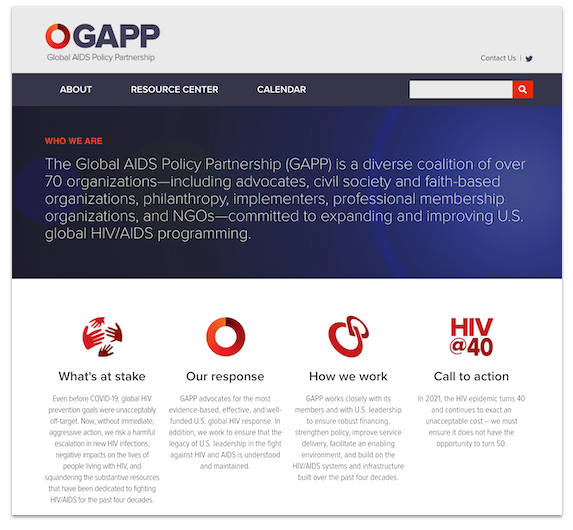Carlos del Rio is professor of medicine at Emory University School of Medicine and professor of global health and epidemiology at Emory’s Rollins School of Public Health. He is also chair at the PEPFAR scientific advisory board. Mitchell Warren is AVAC’s Executive Director and a member of the PEPFAR scientific advisory board. This piece first appeared on Devex.
US President Joe Biden has repeatedly praised the United States’ leadership in the global effort to end HIV/AIDS. Early this month, in marking the 40th anniversary of the start of the AIDS pandemic, the White House noted the “heartbreaking human toll” of nearly 35 million global AIDS deaths, the ongoing, high rate of new HIV infections worldwide, and the enormous progress being made against the epidemic by the US President’s Emergency Plan for AIDS Relief, or PEPFAR.
But surprisingly, more than five months into the new administration, PEPFAR remains with an acting global AIDS coordinator and, thus, effectively leaderless, for far longer than at any point in its history.
The silence on who will run US efforts to control and reverse the AIDS pandemic is a source of increasing anxiety and frustration for advocates, public health officials, PEPFAR partners around the world, and members of the PEPFAR scientific advisory board, on which we both sit.
PEPFAR is the largest single-nation effort to address a disease in history and is one of the few examples of a highly effective and truly bi-partisan government program, garnering both Presidential and Congressional support for almost 20 years.
Since its creation, PEPFAR has enabled more than 18 million people to receive life saving antiretroviral treatment, and provided HIV testing for 50 million people.
As members of PEPFAR’s scientific advisory board … we know that the best-intended efforts by committed staff and capable advisers still require clear and consistent leadership.
PEPFAR’s DREAMS initiative has reduced new infections among adolescent girls and young women who are particularly vulnerable to HIV in several sub-Saharan African countries.
Moreover, the HIV policy, programmatic, and laboratory infrastructure that PEPFAR has helped to build over the past 18 years is the strongest foundation for an equitable global response to COVID-19 and future pandemics. To put it simply, PEPFAR is US global leadership at its best.
PEPFAR’s impact is so enormous, and its leadership is seen as so important to US efforts to advance global health and security, that its program director holds the title of ambassador — unique among US global health employees, and its activities are coordinated by the US Department of State. Of all of the vacant ambassadorships in Washington, PEPFAR’s vacant leadership is one that causes global health advocates the most alarm.
Of course, this multibillion-dollar global initiative continues to function, even without clear leadership. But the lack of a Presidentially-appointed and Senate-approved PEPFAR director is beginning to take its toll on efforts, such as those approved at the 2016 United Nations High-level Meeting on HIV/AIDS, to end the global AIDS epidemic by 2030, where US leadership was necessary to secure global commitments.
PEPFAR-supported infrastructure is also critical to ending COVID-19 globally, an effort that must be coordinated between a permanent PEPFAR director and the recently appointed Gayle Smith, the State Department’s coordinator for global COVID-19 response and health security.
As US Representatives and HIV/AIDS Caucus co-chairs, Barbara Lee and Jenniffer González-Colón noted in a recent letter to the White House, PEPFAR’s strategic plan, which lays out its global AIDS-control vision for the next five years, is currently being developed with no leader in place.
Daily decisions on efforts to ensure the delivery of critical PEPFAR services, now severely tested by COVID-19, are being made without the benefit of a director with a clear line to the highest levels of the US government.
That situation could have been understandable in the early weeks of a new presidency, but more than five months into the Biden-Harris administration, it’s past time to give PEPFAR leadership the priority it deserves. The administration’s failure to have named PEPFAR leader to work with member states at the recent UN High-Level Meeting, and to represent the program at the upcoming International AIDS Conference next month sends a message that HIV is no longer a priority for the administration.
Few doubt this administration’s commitments to a robust response to HIV/AIDS. The recent appointment of Harold Phillips as the director of the White House Office of HIV/AIDS Policy — a position left vacant since 2017 — will strengthen efforts to control and reduce the US’s own entrenched national HIV epidemic, which disproportionately impacts people from racial and ethnic minorities, men who have sex with men, heterosexual women, people who inject drugs, transgender people, and people from other marginalized communities.
As members of PEPFAR’s scientific advisory board, however, we know that the best-intended efforts by committed staff and capable advisers still require clear and consistent leadership from a director who brings the demonstrated confidence of the President, Secretary of State, and Congress to the table.
The world has just commemorated the solemn anniversary of 40 years of AIDS. Now it’s time for the President to nominate a strong PEPFAR leader with the vision and commitment to help lead global efforts to control and eliminate AIDS in the years ahead.
